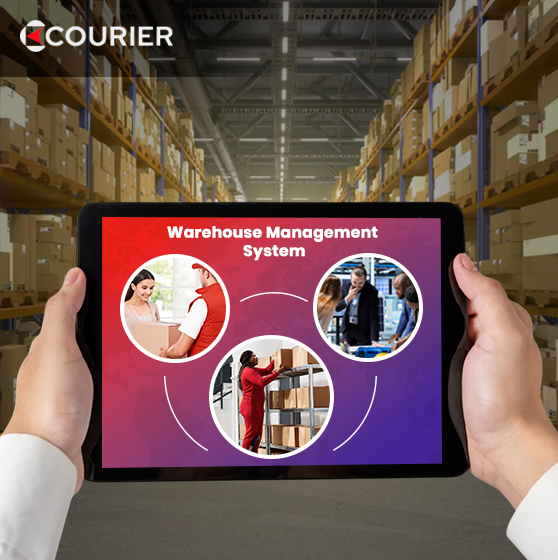
Are you facing difficulties in finding and tracking products in a warehouse?
Warehouses play a crucial role in supply chain management. A well-organized warehouse ensures operations run smoothly, impacting your business. Warehouse organization enables companies to enhance their warehouse management skills, streamline operations, and lower costs.
Whether you are managing a small e-commerce operation or a large distribution center, optimizing warehouses is crucial. It directly impacts your productivity, reducing costs and maximizing available spaces with large and small warehouse storage ideas.
With a wide range of solutions and strategies, it can be overwhelming to make a choice.
In this detailed blog, we will explore the warehouse storage ideas and understand their significance. We will further explore the best ways to organize your warehouse and discuss strategies to enhance it.
Start reading!
The concept of storage ideas for a warehouse is focused on creating an efficient, productive, and safe working environment.
- Organizing a warehouse involves adequate inventory storage and takes into account layout, cleanliness, and input from employees.
- Here, we will also delve into the significance and effective ways to organize the warehouse storage.
- The right warehouse setup ideas make it easier to max out vertical and horizontal space.
- A practical storage solution optimizes both vertical and horizontal space, which is crucial due to increasing rental prices.
- Implementation of technology will facilitate automated reporting, data analysis, and inventory control. It enhances warehouse organization at a detailed level.
Table of Contents
What Is Warehouse Organization?
Warehouse organization defines the strategic and systematic process of managing inventory and operations.
The primary focus is to optimize efficiency, productivity, and safety in storage, order fulfillment, and shipping. It involves organizing, coordinating, and managing the storage and transportation of goods in a warehouse.
Warehouse storage solutions utilize advanced technologies and strategies to enhance efficiency. It leads to increased customer satisfaction and reduced overall costs.
Certain essential aspects of warehouse organization include –
- Creating a design enables a seamless, straightforward movement of products, from arrival to dispatch.
- Efficiently supervising stock levels.
- Implementing commercial storage ideas that optimize space utilization.
- Incorporating clear labels and signs for straightforward navigation.
- Utilizing technology, including warehouse management systems (WMS) and automation.
- Keeping an organized and tidy space.
It focuses on these practical aspects, enabling warehouse managers and supervisors to streamline operations, reduce expenses, and improve overall efficiency.
Why is Warehouse Organization Important?
Warehouse organization involves developing a positive atmosphere for your team. An organized floor plan leads to decreased waste, improved productivity, and enhanced inventory control. Organizing the warehouse also helps prevent health and safety issues.
An organized warehouse is both a secure and efficient space. A properly maintained workspace enhances operational efficiency and guarantees the delivery of top-notch service to all your customers and clients.
Let us take a look at the factors that make warehouse organization essential –
-
Increases Productivity:
A well-structured warehouse stores items in designated, recorded spots. It features distinct, spacious pathways that enable employees and machinery to move effortlessly through aisles and locate the necessary items with ease. It also helps workers invest less time looking for items and materials.
-
Improves Safety:
When everything is organized, maintaining clear aisles is easier. Appropriately spacing the aisles is essential for organization.
It provides sufficient room to store various items. With broader, organized aisles in the warehouse, employees are less likely to cause accidents or trip and fall over items.
-
Reduced Errors and Damaged Goods:
Clear and direct warehouse management ideas allow your staff to make informed choices. As a result, it influences customer satisfaction.
For example, an efficient picking system enables workers to quickly locate and select items for packaging. Moreover, storing items in safe, specific locations minimizes harm caused by incorrect stacking.
-
Better cost savings:
One of the most essential aspects is that a well-organized warehouse leads to reduced expenses. Warehouse ideas improvement and implementation impact productivity, safety, and accuracy.
It even allows you to minimize costs associated with inefficient procedures. A significantly smaller portion of your budget is allocated to excessive energy usage and surplus waste.
20 Ways to Organize Your Warehouse
The specific process for organizing a warehouse relies on the business. There is a broad spectrum of optimal strategies concerning certain factors.
These include warehouse design, stock management, technological application, sanitation and upkeep, storage options, and staff training.
Warehouse supervisors and managers can adopt these practices to enhance warehouse organization and efficiency.
Here are the top 20 organizing ideas for a storage warehouse –
Layout and Design
The arrangement, design, and utilization of space in a warehouse are crucial for efficient operations. The layout of your warehouse distinguishes an efficient and seamless environment from a disorganized and ineffective one. Your warehouse layout should be tailored to your requirements, necessitating the identification of your business’s distinct objectives.
The ideas for warehouse storage space, according to layout and design, include –
-
Analyze Your Floor Plan:
A well-organized warehouse arrangement starts with evaluating the existing floor plan. It is not solely about floor area; it includes ceiling elevation, staircases, doorways, support columns, offices, bathrooms, and additional spaces.
A proper illustration establishes the groundwork to facilitate a setting where pathways and processes operate smoothly and securely.
-
Assess Your Space:
Keeping the layout and business requirements in focus, you must think about the utilization of each square foot of the warehouse. You must focus on achieving maximum space efficiency while ensuring that safety and effectiveness are not compromised.
Ensure that inventory is readily accessible and that personnel and machinery can move easily among areas. You also need to ensure that there is sufficient space for safe loading/unloading and restocking tasks.
-
Revamp the Warehouse Layout:
Warehouses often require adjustments to accommodate changes in inventory levels, product ranges, or operational processes. Regularly evaluate your warehouse structure to accommodate expansion, evolving inventory requirements, and process enhancements.
-
Consider Vertical Storage:
Implementing vertical space is an excellent method to enhance storage capacity without extending the warehouse’s area. It is a crucial factor to consider, given the rising costs of warehouse leasing.
Many vertical storage options can be customized to meet a business’s specific requirements. It may feature adjustable shelf heights and modular parts that can be rearranged as needs evolve.
-
Create A Shelving Structure:
A shelving structure focuses on effectively categorizing and arranging items in the warehouse. It helps enhance efficiency and minimizes waste.
It primarily involves arranging items according to their frequency of use, positioning high-turnover items in more accessible locations. It leads to reducing travel time and enhancing picking efficiency.
Heavier and larger items are typically placed closer to the ground for safety reasons. Consistently evaluating inventory data allows companies to remain adaptable and boosts overall efficiency.
-
Allocated Receiving Areas:
Receiving areas serve as the initial point of a warehouse’s operational process. You must look for places that establish the atmosphere for inventory control and order processing. A practical arrangement and rational structure can do it.
Receiving areas must be large enough to accommodate shipments of various sizes and allow space for inspection and sorting. It also provides for temporary storage before transferring items to their designated storage locations or picking areas.
Inventory Management
Every warehouse holds inventory, whether it is retail items ready for sale, works-in-progress, or raw materials. Maintaining this inventory in an organized and managed way is essential.
Warehouse space business ideas for inventory management include –
-
Classify:
Categorizing inventory according to sales speed, worth, or dimensions is an effective method. It is to enhance warehouse organizational effectiveness. Accurate classification additionally enhances inventory planning, restocking, and management.
Depending on the warehousing process, it is also essential to categorize inventory by type. It includes raw materials, work-in-progress, or finished products.
-
Manage:
Inventory control involves monitoring levels while observing consumer demand. Managing inventory and keeping an orderly warehouse are two aspects of the same concept.
A well-organized warehouse enhances space efficiency, streamlines inventory handling, minimizes errors and losses, and improves the traceability of products. These elements directly influence the effectiveness of a team in managing inventory levels and demand.
-
Maintain Lean Inventory:
By lowering stock levels to the minimum required to meet customer needs, companies can optimize space and refine their workflows. It boosts overall adaptability in the warehouse.
However, lean inventory management is a process that requires effort and involves adopting just-in-time (JIT) delivery. It is mainly focused on precise demand predictions. It also necessitates robust relationships with suppliers to secure stock quickly when needed.
A streamlined inventory directly enhances warehouse organization by simplifying procedures, minimizing waste, and increasing inventory precision.
-
Accumulate Similar Items:
Keeping items with similar traits or those frequently purchased together nearby eases the process of picking and restocking. This systematic approach to managing inventory enhances inventory control and reduces errors by optimizing spatial arrangement.
A properly organized warehouse with logically categorized products will also be simpler for new workers to understand and navigate. It is mainly effective if they lack familiarity with the available items.
High-end Technology
A warehouse with greater space is more likely to gain advantages from technology such as automation and robotics.
However, even smaller storage facilities can gain benefits from warehouse management systems, data analysis, and automated reporting.
Warehouse inventory storage ideas work with technology evolving –
-
Warehouse Management System (WMS):
WMS solutions provide the tools and information organizations need to optimize layouts and maximize space efficiency.
A WMS helps warehouses ensure that any specific item is stored in the best location for easy access. It seamlessly integrates with other technologies, such as barcode scanners and RFID tags.
It enhances precise data collection and monitoring, reducing the likelihood of lost items, and provides insightful data analytics and reporting features.
-
Distribute Maps:
Providing employees with digital or physical maps of the warehouse layout is an effective method to enhance navigation. It also helps optimize operations and increase safety.
For new hires, maps can serve as an essential tool to understand the warehouse layout and minimize the time spent looking for products. Professionals can utilize maps to devise effective picking routes.
These maps enable you to focus on safety exits, the location of emergency equipment, and zones that require special precautions. This, in its entirety, contributes to a safer workplace.
-
Enhanced Data Analytics:
Data analytics has the potential to convert qualitative and quantitative data into practical insights. Additional metrics, including productivity, quality levels, and safety incidents, can be monitored to help managers make decisions. These can be regarding staffing requirements, workload distribution, and improving internal logistics efficiency.
Tools offering customizable data dashboards simplify data analytics, presenting an effective way to track metrics and help improve industrial warehouse ideas.
-
Automate Reporting:
Effective warehouses produce reports on stock, orders, and performance indicators. These reports enhance a team’s ability to identify patterns and make informed, data-driven decisions to improve operations.
However, manual reporting is time-consuming and prone to errors. Advanced WMS solutions work with RFID tags, barcode scanners, IoT devices, and sensors. It enables the real-time collection of reporting data and the automatic generation of actionable reports either at set intervals or as needed.
-
Integrate Automated Storage And Retrieval Systems (AS/RS):
AS/RS are advanced robotic warehouse automation solutions. It helps in placing and fetching items to enhance more efficient, hands-free inventory control.
The AS/RS systems are inherently designed to maximize vertical and horizontal space in warehouses, thereby enhancing storage capacity.
Utilizing well-monitored retrieval systems, these devices maximize the utilization of available vertical and horizontal space. It provides more item storage within a reduced area.
Maintenance and Cleanliness
Regular maintenance and implementing effective methods to reduce or eliminate clutter are essential for warehouse organization.
Maintenance warehouse ideas for storage warehouse include –
-
Effective Regular Maintenance:
Regular maintenance of equipment and facilities may be neglected. Warehouse organization must enhance the layout. Routine maintenance ensures that all devices and machines function smoothly, minimizing the likelihood of unforeseen failures.
This proactive strategy helps sustain steady productivity rates and promotes a safer atmosphere by reducing the possibility of incidents.
-
Keep The Premises Clean:
Frequent cleaning helps ensure a safe workplace. It reduces the chances of accidents and injuries due to spills, mess, and disorder. It also enhances inventory management by avoiding harm to products and equipment.
Storage Solutions
Pallet racks and shelving improve space utilization in the warehouse. It allows more storage density and facilitates easier access to stock.
Storage ideas for a warehouse include –
-
Installing Racks and Shelves:
By increasing storage capacity vertically, pallet racks and shelving units facilitate the organized arrangement of products, minimizing disarray. These storage options enable easy access to and precise monitoring of inventory.
The tailored solutions exist to fit various item sizes and weights, ensuring that any warehouse can provide secure and practical storage.
-
Enhance Space Utilization:
Companies should consistently look for methods to enhance space efficiency. To eliminate the necessity for extra warehouse space, managers focus on optimizing their current footprint. This can be accomplished by reorganizing layouts and utilizing space-saving storage options.
Training and Staff Involvement
The working staff plays a crucial role in optimizing warehouse organization since they consistently move through the area.
Warehouse storage organization ideas based on training your staff include –
20. Generating Feedback and Ideas:
Organizations should foster a culture that encourages team members to express their thoughts and recommendations. This may include processes, arrangements, and storage methods.
The staff working in a warehouse can spot minor, ongoing issues that need to be addressed to avoid impeding productivity. Along with enhancing procedures and general warehouse arrangement, promoting open communication, and cultivating a sense of responsibility and involvement among employees.
How to Improve Warehouse Space?
A low warehouse space utilization rate indicates that you are not fully utilizing your warehouse capacity. Optimizing storage capacity is crucial for increasing productivity and lowering operational expenses.
Whether you have a compact storage unit or a vast distribution hub, optimizing your space is crucial. It results in more efficient workflows, improved inventory control, and higher profits.
Here are several warehouse space ideas to improve its efficiency –
-
Develop Warehouse Layout
Carefully inspect your current warehouse configuration to identify areas for improvement and increase storage capacity. Designing your layout with a logical flow of goods is crucial for assigning storage locations effectively.
-
Implement Vertical Space
Vertical space is a valuable resource in e-commerce warehouses. Maximize the use of overhead space by incorporating vertical storage solutions and adding mezzanine levels. This allows you to maximize your overall warehouse capacity without utilizing the entire floor area.
-
Opt for Cross-Docking
A cross-docking and transloading warehouse reduces inventory storage requirements as incoming products are promptly transferred to outbound vehicles for delivery. Implementing this approach will decrease the volume of stock that must be allocated to storage areas. You can optimize the existing space to keep inventory that requires extended storage.
-
Develop a Warehouse Management System
A warehouse management solution helps you oversee your inventory to enhance space efficiency. It offers real-time monitoring and conducts inventory cycle counts. It enables you to uphold precise inventory levels and reduce the chances of stockouts.
-
Consolidate Warehouse Locations
Creating separate spaces for different warehouse activities can help you organize your warehouse processes, but it may also consume valuable storage space in your warehouse. Consolidating some of your warehouse areas can improve your warehouse space utilization.
Delivering Excellence with Secured Storage and Optimized Services at the Courier Platform!
Establishing a well-organized warehouse requires a substantial amount of time and effort.
Generally, you will discover numerous items to create a well-organized facility. It ranges from industrial conveyors and steel shelving to robotic machinery.
Optimizing warehouse storage methods is crucial for increasing efficiency, lowering expenses, and guaranteeing seamless operations. Implementing the effective strategies will help you optimize your space, enhance inventory organization, and foster a safer atmosphere.
Each of the approaches can enhance organization and boost profitability. Start implementing these recommendations today. And it will lead to bringing productivity and excellence.
At Courier Platform, we offer top-notch bulk storage warehouse solutions for both large and small items. Our services help you minimize storage time and reduce handling costs. We ensure the transfer of goods with faster delivery and reduced risk of damage.
Courier Platform – Your storage partner for business growth!
FAQs
How to maximize storage space in a warehouse?
To maximize storage space in a warehouse, consider utilizing vertical height with a high-bay racking system and mezzanine floors. You can optimize the aisle width with narrow designs and suitable handling tools.
You can adopt dynamic slotting techniques to cluster similar or frequently accessed items. You can implement Warehouse Management Systems (WMS) for enhanced tracking and management. You can explore high-density storage solutions, such as push-back racking, and conduct inventory audits to minimize space waste from obsolete or unused items.
How to organize a warehouse efficiently?
Organize your warehouse by evaluating your existing layout and pinpointing areas that need improvement. It includes bottlenecks, inefficiencies, and safety issues.
Allotting distinct areas for various processes and utilizing suitable storage options, such as racks, shelves, and bins, as needed.
Clearly label all items, ensure a tidy and organized space, and educate staff on optimal methods for organization and productivity. Implementing a warehouse management system can be advantageous, offering essential tools and insights to enhance layouts, improve processes, and optimize space usage.
What are the three main types of storage in a warehouse?
Warehouse storage solutions range from simple shelving and racking systems to more complex options, such as mobile shelving, multi-tier racking, and mezzanine floors.
Pallet racking is generally used for bulk storage, and shelving is better suited for smaller items. The best solution depends on the specific needs and characteristics of the warehouse.
Warehouse storage can generally be categorized into three main types: pallet storage for bulk goods, shelf storage for smaller, individual items, and bulk storage for large, unpackaged materials.
How do you manage a messy warehouse?
To manage a messy warehouse, start by decluttering and disposing of obsolete or damaged inventory. The following steps involve cleaning and organizing.
Ensure that employees are trained on the importance of maintaining an organized workspace. You can provide maps and establish clear zones for receiving, storage, picking, packing, and shipping. It is crucial to use labels and signage to ensure that items are stored in their designated areas.
What are the three warehouse layouts?
Warehouse layout options include U-shaped, I-shaped, and L-shaped patterns. A U-shaped warehouse product flow is the most common type of layout.
Recent Posts





 25th September , 2025
25th September , 2025 





